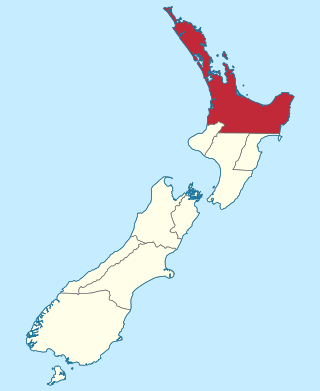
Sir Edward William Stafford served as the third premier of New Zealand on three occasions in the mid 19th century. His total time in office is the longest of any leader without a political party. He is described as pragmatic, logical, and clear-sighted.

The 39th New Zealand Parliament was a term of the Parliament of New Zealand which began with the general election held on 25 November 1978, and finished with the general election held on 28 November 1981. The dates of the Muldoon Ministry were from 13 December 1978 to 11 December 1981.

The Auckland Province was a province of New Zealand from 1853 until the abolition of provincial government in 1876.

Francis Jollie was a politician in New Zealand.

Edward Jollie was a pioneer land surveyor in New Zealand, initially as a cadet surveyor with the New Zealand Company. The Christchurch Central City is laid out to his survey.
Hawke's Bay was a parliamentary electorate in the Hawke's Bay Region of New Zealand from 1881 to 1996. In 1986 it was renamed Hawkes Bay.
Robert Pharazyn was a 19th-century Member of Parliament in the Manawatū region of New Zealand.
The Third Atkinson Ministry was a responsible government in New Zealand, sometimes referred to as part of the Continuous Ministry. It took office after the retirement of Frederick Whitaker and continued the personnel and policies of the Whitaker and Hall ministries.
The Weld Ministry was the seventh responsible government to be formed in New Zealand, and lasted a less than a year during the New Zealand Wars. It formed in November 1864 and lasted until October 1865. As the office of premier had yet to be formally established, Frederick Weld was never gazetted premier but did resign the position at the end of his tenure.
The First Stafford Ministry was the third responsible government to be formed in New Zealand, and the first to last more than a few weeks. It formed in June 1856, and lasted until July 1861. As the office of Premier had yet to be established, Edward Stafford served as head of the government, although initially Henry Sewell was the Minister who reported to the Governor.
The Domett Ministry was a responsible government which held power in New Zealand from August 1862 to October 1863. Although Alfred Domett was the head of the government, he was never appointed Premier as that office had yet to be established. Instead, he was Colonial Secretary and Secretary for Crown Lands.
The Whitaker-Fox Ministry was a responsible government which held power in New Zealand from October 1863 to November 1864. Although Frederick Whitaker was the head of the government, he was never appointed Premier as that office had yet to be established. Instead, he was Attorney-General sitting in the Legislative Council while William Fox led the Government in the lower house.
The Third Fox Ministry was a responsible government which held power in New Zealand from June 1869 to September 1872. Although William Fox was the head of the government, he was never appointed Premier as that office had yet to be established, although he did resign the office at the end of his tenure. The Ministry was also known as the Fox-Vogel Ministry as most of the agenda was set by the Treasurer, while Fox busied himself with administrative affairs and moral crusades such as the attempted introduction of local option polls for liquor licensing.
The Third Stafford Ministry was the tenth responsible government to be formed in New Zealand, and lasted for a month.
The Fourth Fox Ministry was a responsible government which held power in New Zealand from March to April 1873.
The First Vogel Ministry was a responsible government which held power in New Zealand from April 1873 to July 1875.
The Second Vogel Ministry was a responsible government which held power in New Zealand from February to September 1876.
The Fourth Atkinson Ministry was a responsible government in New Zealand, which lasted less than a week. It formed on 28 August 1884 after the fall of the first attempt at a Stout-Vogel coalition and lasted until Robert Stout and Sir Julius Vogel took back their majority on 3 September.
The Second Stafford Ministry was the eighth responsible government to be formed in New Zealand, and one of the longer-lasting ministries during this period. It formed in October 1865 and lasted until June 1869. However, it was defeated in a vote of confidence on 15 August 1866 and resigned, to be reconstituted with three ministers replaced, so some contemporaries regarded it as two separate Ministries. As the office of Premier had yet to be formally established, Edward Stafford did not carry this title officially.
The Waterhouse Ministry was a responsible government which held power in New Zealand from October 1872 to March 1873, led by the Hon. George Waterhouse from the Legislative Council. It is notable as the first Ministry to include Māori as members of Cabinet.














